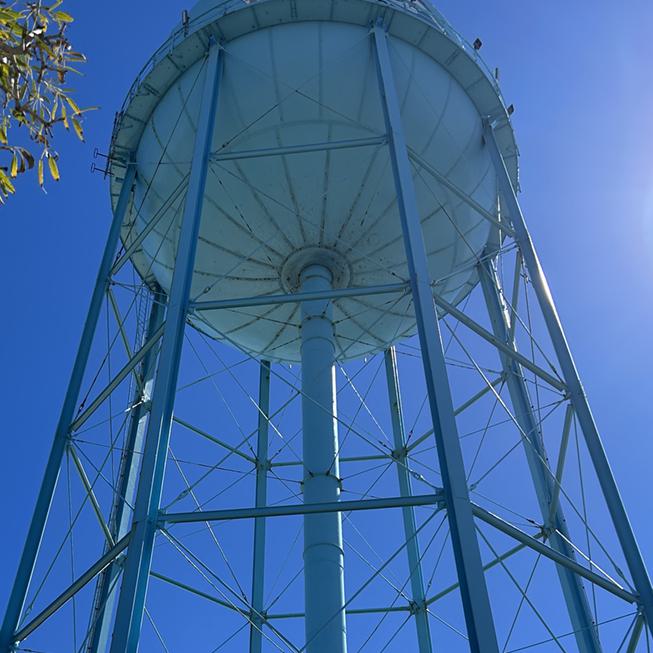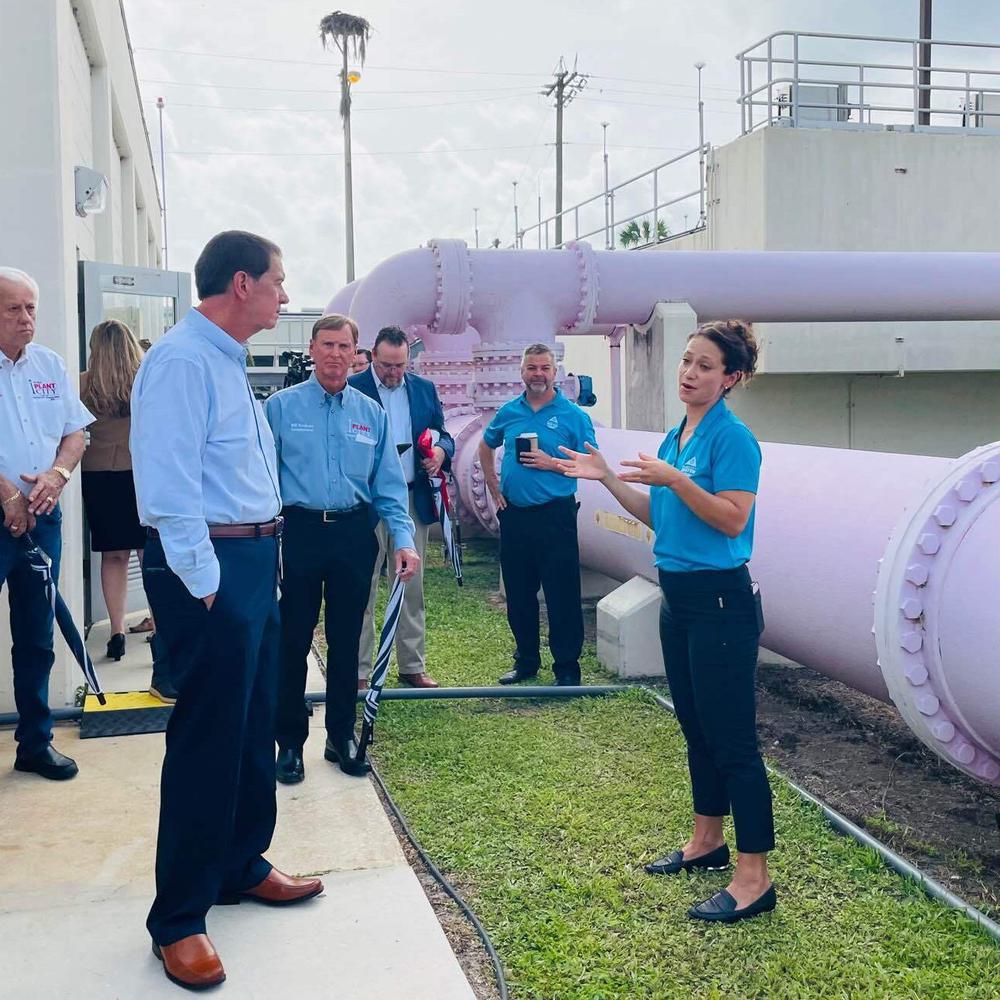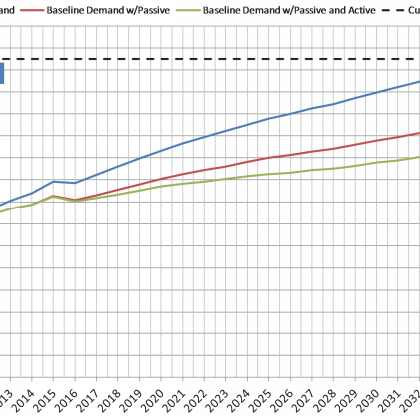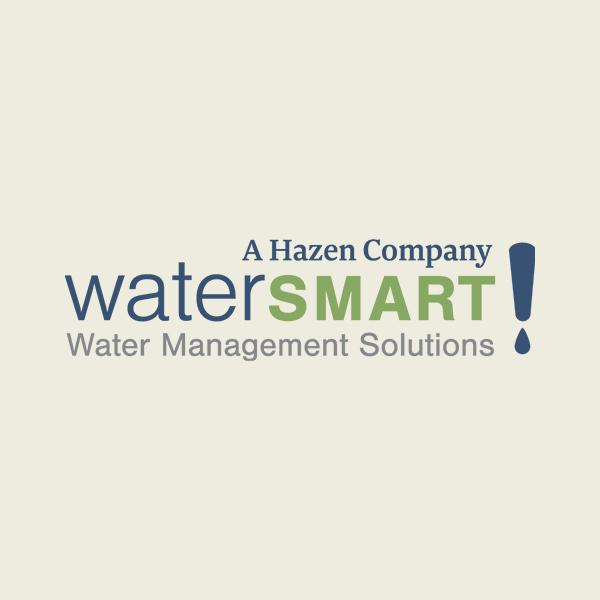Removing Next-Generation Forever Chemicals Could Carry a Hefty Price Tag
A team of utilities, universities, and consulting firms including Hazen has unlocked critical insights about the costs and effectiveness of PFAS removal technologies.
At a Glance
- Hazen developed innovative tools that can quickly estimate the costs—total and per household—of treating water to remove both legacy PFAS and next-generation PFAS.
- The tools were developed in collaboration with North Carolina State University, Colorado School of Mines, the Southern Nevada Water Authority, American Water, the City of Ann Arbor, and CDM Smith as part of an ambitious research project funded by the Water Research Foundation. In addition to developing the tools, the partners collected and analyzed extensive data on PFAS removal from roughly 40 diverse utilities.
- The tools show that using existing PFAS treatment strategies to target next-generation PFAS could cost two to three times more than targeting just long-chain PFAS.

Conner Murray, PhD, has expertise in a wide range of PFAS projects, including treatment design for removal from water and wastewater, cost estimation, and forensic discovery of PFAS contamination.
"If one PFAS removal technology is twice as effective as another technology but costs four times more, then it’s not a suitable alternative. These tools put the cost of PFAS removal front and center." Conner Murray, PhD, developer of the PFAS cost estimation tools
When engineers talk about the performance of water treatment systems, they tend to focus on complicated details like total organic carbon, empty bed contact time, and contaminant breakthrough. But for the officials who run utilities—who have to protect public health while balancing budgets—the most important performance metrics have dollar signs: How much will this or that technology cost? And how will the cost impact people’s monthly water bills?
Cost is particularly tricky to estimate for utilities considering equipment to remove per- and polyfluoroalkyl substances, or PFAS. For one thing, there’s regulatory uncertainty: The U.S. Environmental Protection Agency is finalizing drinking water regulations and considering hazardous waste designations for PFOA and PFOS, two of the best-known PFAS. Some states have their own restrictions for PFAS in discharges and finished drinking water. There are also multiple established technologies to choose from and new ones entering the market, each with strengths and drawbacks.
On top of that, the chemicals themselves have evolved. Much of the research and regulatory developments around PFAS has focused on so-called legacy PFAS: older, long-chain compounds like PFOA and PFOS. (Legacy PFAS are often called “forever chemicals.”) The dominant PFAS removal technologies—granular activated carbon (GAC), ion exchange (IX), reverse osmosis (RO), and nanofiltration (NF)—effectively remove legacy PFAS from water. But in the mid-2000s, chemical producers began replacing legacy compounds with newer, short-chain alternatives like GenX and PFBS. There’s been little understanding of how well existing PFAS treatment options remove these next-generation PFAS.
Hazen has created a groundbreaking set of tools that helps utilities quickly estimate the total cost of PFAS removal—and how that cost could impact individual household water bills. The estimates are based on:
- Type of PFAS targeted (just legacy or both legacy and next-generation)
- The utility’s specific goals or regulatory requirements
- Presence of other contaminants or elements in source water that could impact treatment performance
- Pretreatment steps that could, if effective, lower costs
- Categorization of residuals as hazardous or non-hazardous waste
- Facility size
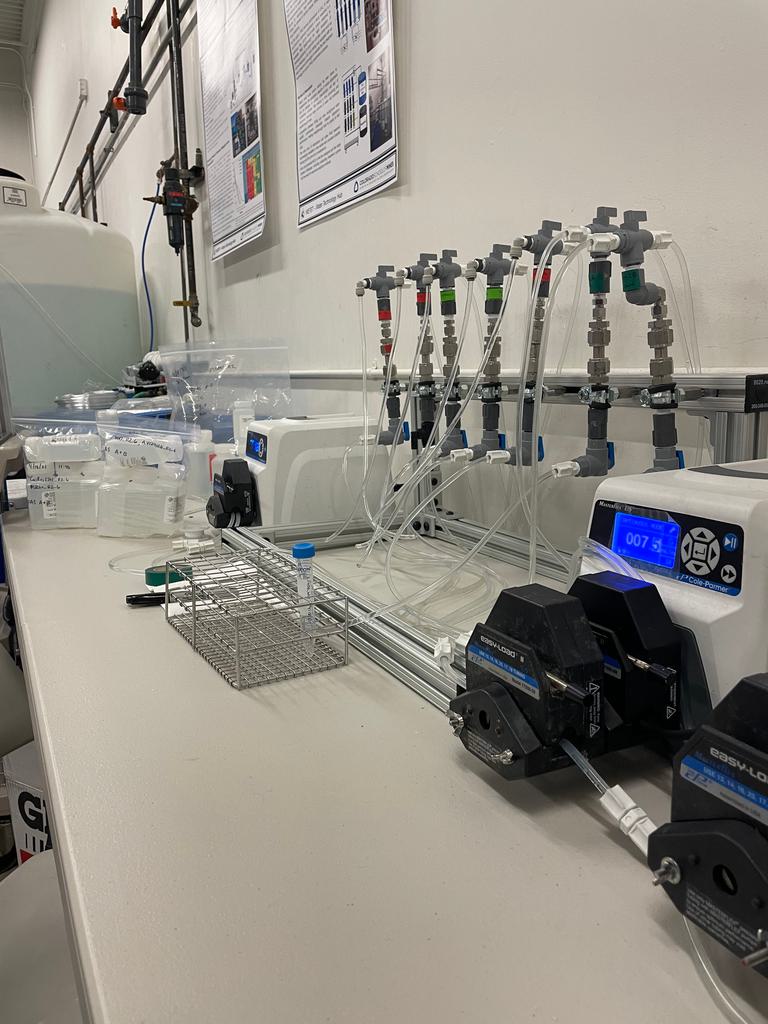
Through his environmental engineering PhD at Colorado School of Mines and as part of this Water Research Foundation project, Conner Murray ran groundwater samples from California through bench-scale granular activated carbon (GAC) and IX systems—along with a novel adsorption system—to test for PFAS removal.
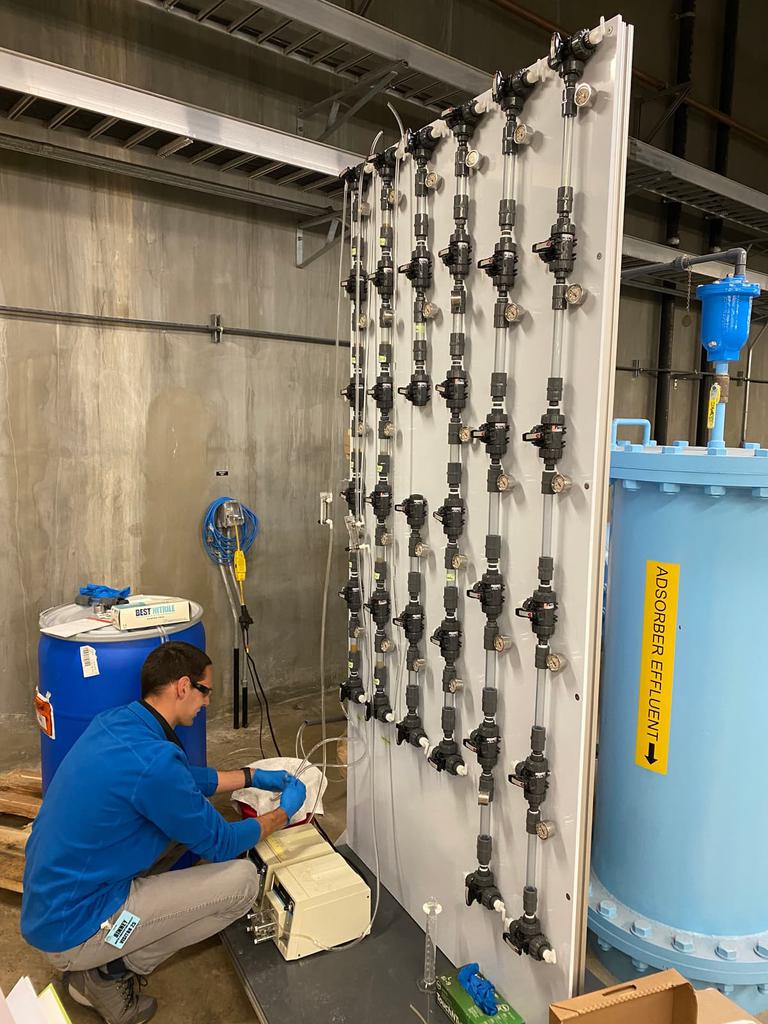
Murray developed the cost curves for the project after becoming an Assistant Engineer at Hazen. Here, he collects samples from a bench-scale ion exchange (IX) system at Aurora Water in Colorado.
The tools are part of an ambitious, Water Research Foundation-funded project investigating 1) how effectively various technologies remove both legacy and next-generation PFAS, and 2) how much it costs to effectively treat both kinds of PFAS. Project partners include North Carolina State University, Colorado School of Mines, the Southern Nevada Water Authority, American Water, the City of Ann Arbor, and CDM Smith.
The work had two key components:
Original research
About 40 utilities across the country shared new and existing data from bench-, pilot-, and full-scale tests with the study’s researchers. The researchers compiled the data to analyze the performance and cost-effectiveness of PFAS removal technologies. This large, comprehensive data set includes a wide range of PFAS compounds; water quality characteristics for sources including groundwater, surface water, and wastewater treated for reuse; and performance data for GAC, IX, RO, and NF systems, plus data for several emerging treatment technologies, for both legacy and next-generation PFAS.
Cost curves
Hazen used EPA cost models to generate cost curves for PFAS treatment. The curves predict how different treatment configurations, removal goals, removal performance, and water quality characteristics will influence treatment cost. In addition, the team used national income data and economic literature to build “affordability” curves, which show how all of those factors could impact the monthly water bills of utility customers.
Results
The project’s research shows that existing PFAS removal systems aren’t as effective for next-generation compounds as they are for legacy compounds. The short-chain chemicals break through treatment barriers more quickly, so the treatment media needs to be replaced more frequently—which equates to higher costs.
Building on the data, the cost curves show that using existing PFAS treatment technology to target next-generation PFAS could cost two to three times as much as removing only legacy PFAS. That increase will likely mean a substantial hike in monthly household water bills.
Other insights from the cost curves include:
- Even without requirements for short-chain compounds, installing new GAC and IX systems is likely to make average monthly water bills rise by at least 7% to 10%. For new membrane systems, the average is likely to climb by at least 15%.
- GAC and IX—the most cost-efficient options for utilities focusing only on legacy PFAS—have similar costs. But other factors such as water quality and removal goals can influence which is more feasible.
- For utilities looking at removing both legacy and next-generation compounds, membrane systems may also be financially feasible. But that depends on multiple factors, especially what options there are for disposing of residuals from the membranes.
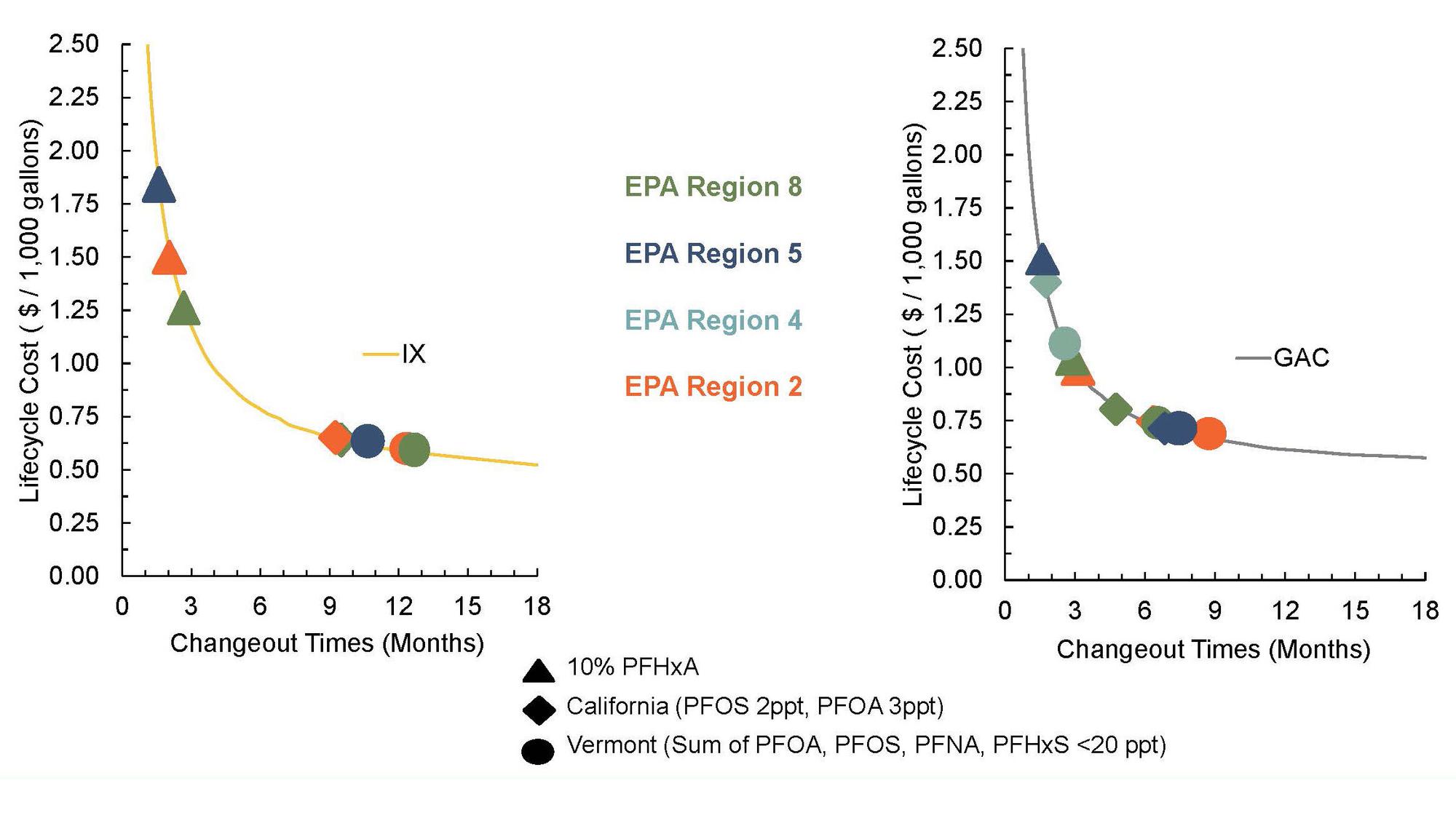
Two of the cost curves developed by Hazen. These curves show how different factors influence the cost-effectiveness of PFAS removal: technology type (ion exchange/IX vs. granular activated carbon/GAC); changeout time (how often the filter media is replaced); source water type (various water samples from different sources and regions); and type of PFAS targeted (PFHxA, a type of short-chain, next-generation PFAS, and various legacy PFAS targeted in California and Vermont’s thresholds).
Hazen’s experts will continue refining the cost-modeling tools so that they reflect current market prices, externalities (indirect costs and benefits), new insights about treatment costs and performance, and the most up-to-date cost estimation standards.
By streamlining complex data into the metrics water managers most want to see—performance, cost, and affordability—these tools offer a valuable preview of potential PFAS treatment costs. Utility managers can use them to compare treatment options and pair them with site-specific testing data for even more granular insights. With those insights, utilities can make faster, cheaper, and smarter decisions about PFAS removal.

